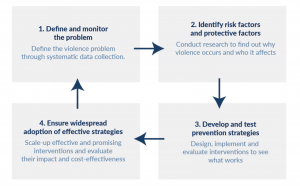Background
In a press conference on April 20th, 1999, Bill Clinton refused to name gun violence, specifically school shootings, an epidemic. Clinton emphasized how he “wouldn’t like to use that word”, further stating how he would like to focus more on gathering the immediate facts from the disaster, and look towards how we can learn from Columbine. However, since 1999, the numbers of gun violence and school shootings have skyrocketed in the United States.

President Clinton and Columbine students at a ceremony to demand Congress passing stricter gun laws on July 15, 1999. (AP Photo/Susan Walsh)
According to the Education Fund to Stop Gun Violence, in 2018, 40,000 Americans were killed from acts of gun violence, a greater number than the amount of Americans killed in car accidents. Furthermore, in 2018, “firearm deaths accounted for 919,185 years of potential life lost before the age of 65”, which was greater than stroke, diabetes and liver disease combined. These statistics reflect that America has clearly not learned from Columbine, or any other act of gun violence and school shooting, with the numbers increasing significantly.
Public Health Issue
The Educational Fund to Stop Gun Violence (EFSGV) approaches the issue of gun violence as a threat to public health, stating how “a comprehensive public health approach is needed to approach the gun violence epidemic”. Through directly naming gun violence and school shootings as an epidemic, EFSGV is able to outline a clear approach to preventing and fighting against gun violence. EFSGV further highlights that utilizing a public health approach has proven effective in reducing smoking-related deaths, eradicating certain diseases, and decreasing car crashes, demonstrating the productivity in taking a public health approach.

The “Public Health Approach”, according to EFSGV.
EFSGV describes gun violence as inflicting “an enormous burden on American society”, as when a child is killed from gun violence, “they lose decades of potential: the potential to grow up, have a family, contribute to society, and pursue their passions in life”. This illustrates how gun violence poses a greater threat in terms of potential lives lost, as when children and teenagers are killed, so is their potential, suggesting how the epidemic is more widespread than initially thought. However, through the public health approach, which begins with a clear definition and monitoring of the problem, these potential lives lost can be minimized.
Discourse
President Bill Clinton’s hesitation in naming gun violence as an epidemic in America illustrates the initial stigma surrounding the direct addressing of gun violence as an epidemic. This stigma is still very much widespread today, and can be largely attributed to the contradicting discourse surrounding gun rights and gun control.
The National Rifle Association (NRA), a US based gun-rights advocacy group, held a gun rally at a convention center in Downtown Denver on May 1st, 1999, less than two weeks after the shooting. Despite being asked by the Denver Mayor Wellington Webb at the time to not come, the convention still took place. At the convention, they reportedly had a moment of silence, however, following it, the NRA president at the time Charlton Heston said that there is “no more precious inheritance” than the 2nd Amendment, highlighting the strength of entitlement many Americans feel in regards to their second amendment right.

Thousands gathered to protest the NRA’s convention in Downtown Denver on May 1, 1999. (AP Photo/Eric Gay)
The convention met with great amounts of protest, including the father of a victim, Tom Mauser. According to an interview with NPR on April 20, 2018, Mauser recalls that day as realizing he was in the fight for gun control, and nineteen years later, he still is. Mauser further stated how he has recently gained hope as a result of the activism that has emerged from the Parkland shooting and the March For Our Lives movement that had occurred earlier that year.
While this rally is just once instance of opposing beliefs regarding gun control, furthering contributing to the discourse surrounding gun rights amid gun violence, it is illustrative of why President Clinton was hesitant to name gun violence as an epidemic. While it is such an expansive word that could instill fear and panic, it would however likely result in further polarizing Americans views regarding gun violence. However, as illustrated by EFSGV, this explicit naming is what is necessary for change to occur. Ignoring the prevalence of gun violence will only perpetuate its effects, and through denying the acknowledgement of gun violence as an epidemic, it will promote one significant question among students nationwide: Is my school next?